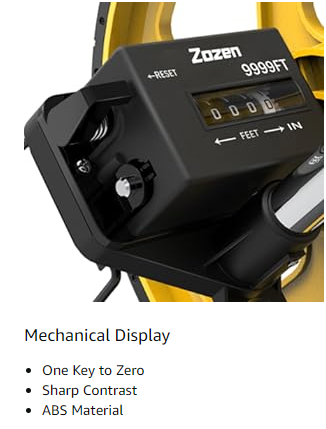
-
 Afrikaans
Afrikaans -
 Albanian
Albanian -
 Amharic
Amharic -
 Arabic
Arabic -
 Armenian
Armenian -
 Azerbaijani
Azerbaijani -
 Basque
Basque -
 Belarusian
Belarusian -
 Bengali
Bengali -
 Bosnian
Bosnian -
 Bulgarian
Bulgarian -
 Catalan
Catalan -
 Cebuano
Cebuano -
 Corsican
Corsican -
 Croatian
Croatian -
 Czech
Czech -
 Danish
Danish -
 Dutch
Dutch -
 English
English -
 Esperanto
Esperanto -
 Estonian
Estonian -
 Finnish
Finnish -
 French
French -
 Frisian
Frisian -
 Galician
Galician -
 Georgian
Georgian -
 German
German -
 Greek
Greek -
 Gujarati
Gujarati -
 Haitian Creole
Haitian Creole -
 hausa
hausa -
 hawaiian
hawaiian -
 Hebrew
Hebrew -
 Hindi
Hindi -
 Miao
Miao -
 Hungarian
Hungarian -
 Icelandic
Icelandic -
 igbo
igbo -
 Indonesian
Indonesian -
 irish
irish -
 Italian
Italian -
 Japanese
Japanese -
 Javanese
Javanese -
 Kannada
Kannada -
 kazakh
kazakh -
 Khmer
Khmer -
 Rwandese
Rwandese -
 Korean
Korean -
 Kurdish
Kurdish -
 Kyrgyz
Kyrgyz -
 Lao
Lao -
 Latin
Latin -
 Latvian
Latvian -
 Lithuanian
Lithuanian -
 Luxembourgish
Luxembourgish -
 Macedonian
Macedonian -
 Malgashi
Malgashi -
 Malay
Malay -
 Malayalam
Malayalam -
 Maltese
Maltese -
 Maori
Maori -
 Marathi
Marathi -
 Mongolian
Mongolian -
 Myanmar
Myanmar -
 Nepali
Nepali -
 Norwegian
Norwegian -
 Norwegian
Norwegian -
 Occitan
Occitan -
 Pashto
Pashto -
 Persian
Persian -
 Polish
Polish -
 Portuguese
Portuguese -
 Punjabi
Punjabi -
 Romanian
Romanian -
 Russian
Russian -
 Samoan
Samoan -
 Scottish Gaelic
Scottish Gaelic -
 Serbian
Serbian -
 Sesotho
Sesotho -
 Shona
Shona -
 Sindhi
Sindhi -
 Sinhala
Sinhala -
 Slovak
Slovak -
 Slovenian
Slovenian -
 Somali
Somali -
 Spanish
Spanish -
 Sundanese
Sundanese -
 Swahili
Swahili -
 Swedish
Swedish -
 Tagalog
Tagalog -
 Tajik
Tajik -
 Tamil
Tamil -
 Tatar
Tatar -
 Telugu
Telugu -
 Thai
Thai -
 Turkish
Turkish -
 Turkmen
Turkmen -
 Ukrainian
Ukrainian -
 Urdu
Urdu -
 Uighur
Uighur -
 Uzbek
Uzbek -
 Vietnamese
Vietnamese -
 Welsh
Welsh -
 Bantu
Bantu -
 Yiddish
Yiddish -
 Yoruba
Yoruba -
 Zulu
Zulu


Nov . 21, 2024 23:46 Back to list
fitting an earth rod - measuring wheel
Fitting an Earth Rod A Step-by-Step Guide with Measuring Wheel
When it comes to ensuring electrical safety in any installation, grounding is a critical process. One essential component of grounding systems is the earthing rod, which helps dissipate electrical charges into the ground. In this article, we’ll explore the process of fitting an earth rod, along with the importance of using a measuring wheel to ensure accuracy in measurements.
Understanding Earth Rods
An earth rod, or ground rod, is typically made of copper or galvanized steel and is driven deep into the ground to create a low-resistance path for electrical currents. This is crucial in protecting electrical systems and minimizing the risk of electrical shocks and equipment damage.
Why Use a Measuring Wheel?
When fitting an earth rod, accurate measurement is critical. A measuring wheel provides a quick and effective way to measure distances on uneven ground, ensuring you place your earth rod at the right location and depth. This tool is especially useful in outdoor settings, where traditional measuring tapes can be cumbersome and less precise.
Step-by-Step Guide to Fitting an Earth Rod
1. Prepare the Site Before you begin, choose an appropriate location for the earth rod. This site should ideally be away from any obstructions and have good soil conductivity. Remove any debris or obstacles from the area.
fitting an earth rod - measuring wheel

2. Use the Measuring Wheel Once the site is clear, use the measuring wheel to determine the ideal distance from your electrical panel or grounding system to the location where the rod will be installed. A distance of at least 10 feet is typically recommended from the foundation of the building to prevent interference with electrical systems.
3. Mark the Spot After measuring, mark the spot where the earth rod will be driven. This is a crucial step that ensures accuracy and helps avoid unnecessary digging or misplacement.
4. Select the Right Rod Depending on your requirements, choose an earth rod of appropriate length and material. Standard lengths are often between 8 to 10 feet. Ensure the rod is compatible with local building codes and electrical standards.
5. Drive the Rod Using a hammer or a driving tool, begin to drive the rod into the ground vertically. Make sure to apply even pressure and check frequently with your measuring wheel to ensure the rod is driven to the desired depth while remaining straight. This may take some time, particularly in rocky or compact soil.
6. Connect the Earth Wire After the rod is securely driven into the ground, connect a suitable earth wire from the rod to your electrical system. Ensure all connections are tight and secure for effective grounding.
7. Test the Grounding System Finally, it’s important to check the resistance of the grounding system using a multimeter or grounding resistance tester. A low resistance reading indicates a good ground connection.
Conclusion
Fitting an earth rod is a vital task that enhances safety in electrical installations. Utilizing a measuring wheel simplifies the process, allowing for precise measurements and improved accuracy. By following the steps outlined above, you can ensure that your grounding system is both effective and compliant with safety standards. Remember, grounding is not just about compliance; it's about protecting lives and property.
Latest news
What Are Construction Tools and How Are They Used?
NewsJul.11,2025
Professional-Grade Duct Rodding Tools for Superior Cable Installation
NewsJul.11,2025
Enhancing Safety and Efficiency with Modern Hot Stick Solutions
NewsJul.11,2025
Empowering Cable Installation with Advanced Rodder Solutions
NewsJul.11,2025
Elevate Your Cable Installation Projects with Cable Pulling Tools
NewsJul.11,2025
Efficient Cable Handling Solutions: Cable Rollers for Sale
NewsJul.11,2025











